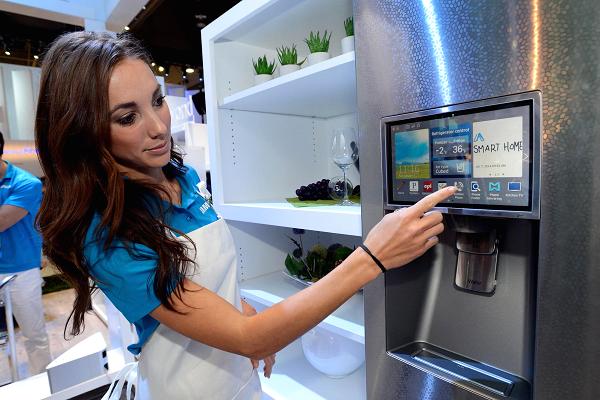Could your home appliances get hacked?
As we steadily get more dependent on technology, using more devices in the home and in the work place there’s little wonder that cybercrime is on the increase. To protect ourselves against malicious cyber-attacks we aim to put the necessary precautions in place to defend against threats both in the home and at work.
Best practice for home users and companies to install firewalls and sophisticated anti-virus software to protect our phones, laptops, desktop computers and other devices against online threats, but a new threat has presented itself recently, putting users at risk from a malicious threat using appliances rather than computers and other devices.
News broke recently of the first ever cyber-attack that involved refrigerators, to send spam emails en masse. Allegedly, hackers were able to hack into home-networks that had been connected to multimedia centres, and using all attached devices or appliances to send malicious emails.
Between 23rd December and 6th January a number of home appliances that were internet-connected were infected by a “botnet” to carry out the attack which targeted both corporate and home networks to send almost 100,000 emails at several points throughout the day. Just over a quarter of the emails sent were from appliances rather than computers, tablets or phones, according to Proofpoint, a security firm based in California.
Andrew Mason from RandomStorm commented:
“It is common for such devices to be compromised as they are becoming more connected. We often find a lot of vulnerabilities that could be exploited on devices such as network printers, IP CCTV systems and other IP enabled devices that often are not part of the general patching policy. Everybody knows about the risks to servers and workstations but other devices also need to be brought into the same patching policies.”
An increase it botnets and thingbots are a serious cause for concern both for home and business users. Not only are appliances poorly protected but there’s little to no way of detecting if the appliance has been infected or even how to combat an infection should it occur.
With the number of devices and appliances joining home and corporate networks, hackers are simply being given more of an opportunity to exploit vulnerabilities for malicious purposes. As technology gets smarter and more appliances come with internet capabilities, the more likely they can be compromised without consumers even being aware of it.
In the recent hacking incident over 100,000 gadgets and appliances including televisions, media-centres and refrigerators from in and around the home were used to send multiple spam and phishing emails. The message seems to be that as more home appliances and gadgets go online, the bigger the risk of our home networks being used for malicious purposes.
However, sources suggest that the attack was easily carried out due users to either incorrectly setting up the devices or not bothering to change the default password.





